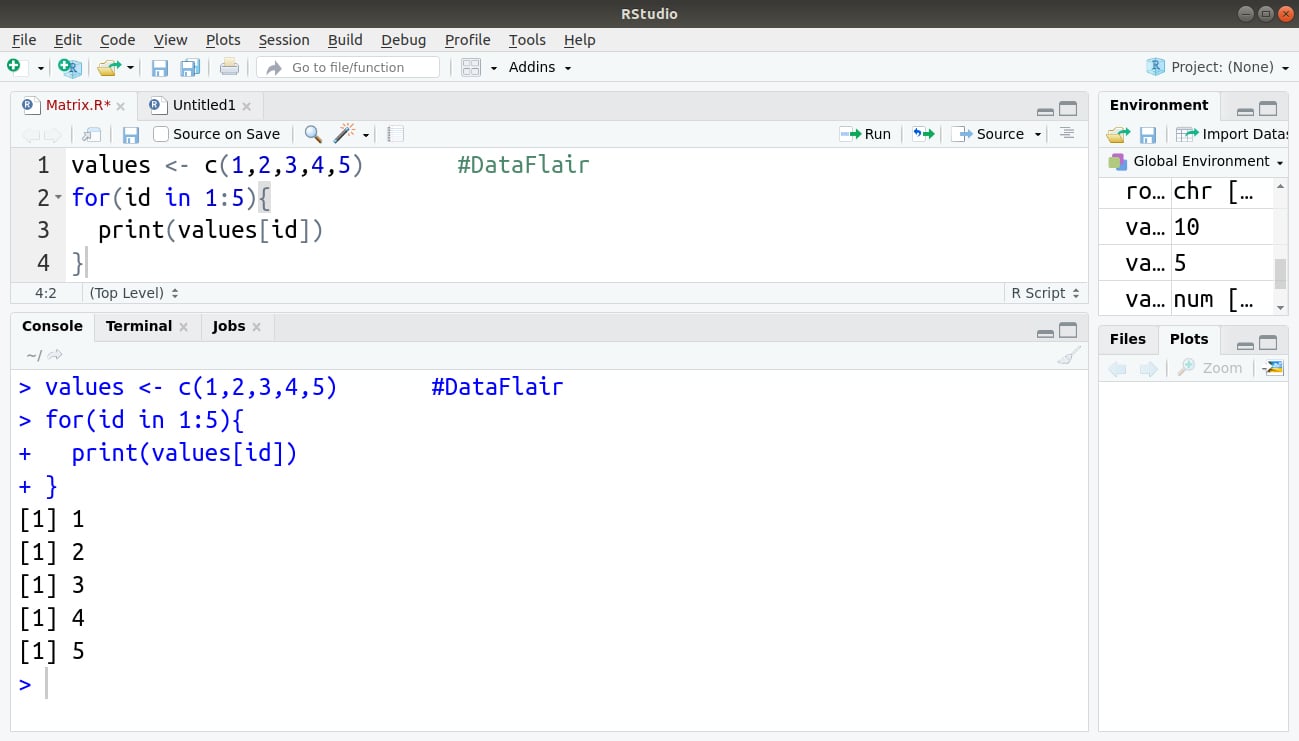

Once each step has been fully specified, we have designed an algorithm. The first step to solving a problem is to think about how we might solve it as a human, as precisely as possible. Recall from the first chapter that a fully specified step-by-step strategy for solving a problem in computer science is called an algorithm. Let’s look at an example in which we want to reverse a list. An algorithm design and implementation example: reversing a list The second parameter is a reference to a list containing the y coordinates of a polygon. The first parameter is a reference to a list containing the x coordinates of a polygon.
WRITE A FOR LOOP IN R CODE
In the code below, the polygon function takes two parameters. Objective: Create a list with data and make use of that list by passing it to a function.

worst_things_about_cs1 = įor now, we don’t have much use for empty lists, but we’ll soon see that we can start with an empty list and then add items to it.

Strictly speaking, it’s incorrect to say “ characters is a list.” Instead, the correct thing to say is “ characters holds the address in memory of a list.” Although the difference between “is a list” and “holds the address in memory of a list” might seem subtle right now, we’ll see later that there’s definitely a difference. The assignment operator = assigns the list to the variable on the left-hand side: characters = Of course, usually there’s not much point in just printing out a list created this way we’d like to be able to refer to the list with a variable name. When the Python interpreter reaches the brackets, Python allocates space in memory for the items in the list.


 0 kommentar(er)
0 kommentar(er)
